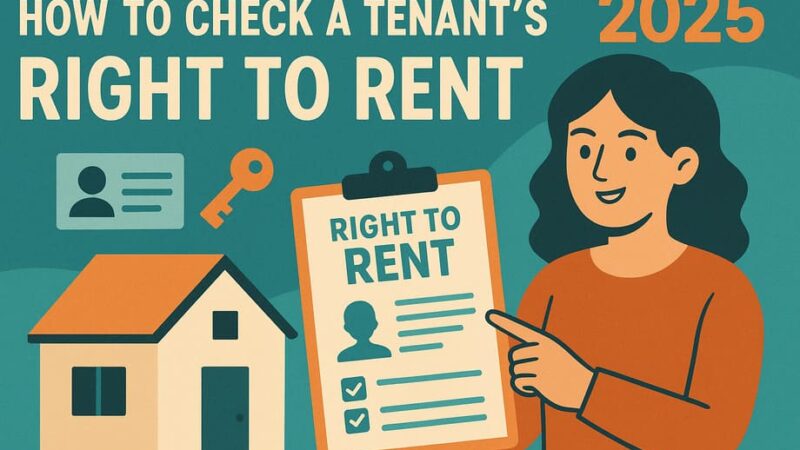Is Buy-to-Let Dead? Risks & Rewards

With the introduction of tax changes and new regulations to comply with, it is understandable that some existing and prospective landlords are wondering whether buy-to-let is still a worthwhile investment.
There’s been a lot of noise recently about the so-called ‘death’ of the Buy-to-Let (BTL) strategy. With new regulations, rising costs, and tax implications, and the new renters rights bill, many landlords are questioning whether property investment is still a viable option and are looking for a way out.
There was a time when buy-to-let was seen as one of the safest and most profitable investments in the UK. Landlords could buy a property, rent it out, cover their mortgage, and watch their investment grow. For many, it was a sure-fire way to build wealth.
But today, that dream is dead.
Thanks to crippling tax changes, relentless regulation, and rising costs, what was once the UK’s best investment has become a financial nightmare for many landlords. So, how did we get here? And what does the future hold for buy-to-let investors?
Despite the changing landscape, buy-to-let investments still offer one of the most profitable low-risk investment options. But here’s the truth: BTL is far from dead. In fact, for those who understand the market and adapt to changes, it remains one of the best long-term strategies for building wealth and financial security.
Why Do People Think Buy-To-Let Is Dead?
There has been a raft of changes impacting landlords over the last decade. Since 2016, a stamp duty surcharge has applied to second properties, and in April 2025, this surcharge increased from 3% to 5%.
The most significant blow to the buy-to-let dream came in the form of Section 24, a tax change that completely altered how landlords are taxed on their rental income. Before Section 24, landlords could deduct their mortgage interest from their rental income, paying tax only on their actual profits. But Section 24 changed that, taxing landlords on their full rental income, even if they’re losing money after mortgage payments.
In 2017, the government introduced Section 24, incrementally reducing the tax relief on mortgage interest for landlords before replacing the relief with a 20% tax credit from 2020 onwards.
Another reason investors have been more cautious about buy-to-let is the higher than usual mortgage interest rates. The Bank of England base rate sat at 0.1% in December 2021 before consistently climbing up to a peak of 5.25% in August 2023, where it remained for almost 12 months.
Rates have been decreasing steadily throughout the second half of 2024 and the first half of 2025 (hitting 4.25% in June 2025) but landlords looking to take out BTL mortgages still face higher interest rates than they would have three or more years ago.
With the added complications of the Renters’ Rights Bill on the horizon, and the extra compliance responsibilities this will entail, there are understandable questions around whether BTL is still worthwhile. It is not all bad news though, as there are plenty of reasons to consider buy-to-let as an investment and it is still possible to achieve a good rental yield.
What’s New? Changes to Buy to Let in 2025?
Throughout 2024 the buy to let market experienced significant changes driven by government policies and market dynamics. Key updates include:
Legislation: Stricter energy efficiency regulations now require landlords to meet higher EPC ratings for their properties. While this increases upfront costs, properties meeting these standards are more attractive to tenants.
Stamp Duty and Taxation: Section 24 restrictions continue to impact mortgage interest tax relief, reducing profits for higher-rate taxpayers.
Rising Demand: Despite regulatory pressures, the demand for rental properties remains robust, driven by increasing rental prices and a growing number of tenants unable to buy their own homes.
Property Prices: While property values have stabilised in some areas, strategic purchases in high-demand regions still offer excellent potential for capital growth.
Renters Reform Bill: Although not in force yet, the new government introduced the renters rights bill to parliament, if passed this would change the rights of tenants & landlords and is something to keep an eye on throughout 2025.
1. The New Renters’ Rights Bill
The Renters’ Rights Bill is a significant piece of legislation currently progressing through the UK Parliament, having recently passed its second reading in the House of Lords. This bill aims to enhance tenant security and rights, introducing key changes such as
- Abolition of Section 21 ‘No-Fault’ Evictions – Landlords will need valid grounds to remove tenants, making it essential to follow proper legal procedures.
- Longer Notice Periods – Extended notice periods for evictions will require landlords to plan tenancy terminations carefully.
- Potential Rent Controls – Some areas may see limits on rental increases, impacting profitability.
How to Mitigate:
- Thorough Tenant Screening – Ensuring reliable, long-term tenants reduces turnover and potential disputes.
- Robust Tenancy Agreements – Clear, well-drafted contracts help set expectations and prevent misunderstandings.
- Investing in High-Demand Areas – Strong rental demand ensures properties remain occupied, minimising financial impact.
While these changes present challenges, landlords who adapt their approach and maintain high standards can continue to thrive in the evolving rental market.
2. Increasing Regulation
Landlords now face stricter energy efficiency standards (EPC rating of C or above), licensing requirements, and additional compliance obligations.
How to Mitigate:
- Investing in energy-efficient improvements can enhance property value and attract tenants willing to pay more for lower energy bills.
- Keeping up with licensing changes and working with reputable letting agents to ensure compliance.
- Viewing regulations as a way to create a more professionalised rental sector, giving an advantage to landlords who operate efficiently.
Those who stay ahead of regulations will be in a stronger position as less-prepared landlords exit the market, reducing competition and increasing demand for well-maintained rental homes.
3. Rising Mortgage Interest Rates
With interest rates higher than they’ve been in years, some landlords are seeing their profit margins shrink, leading to fears that BTL is no longer sustainable.
How to Mitigate:
- Using fixed-rate mortgages to lock in favourable rates and protect against fluctuations.
- Exploring interest-only mortgage options to maximise cash flow.
- Leveraging alternative funding sources, such as limited company mortgages, which may offer better tax efficiencies.
Despite higher rates, rental demand remains strong, and rents are adjusting accordingly. Investing in high-yield areas can ensure cash flow remains positive even in a higher interest rate environment.
4. Tax Implications
Changes such as the reduction of mortgage interest tax relief and additional stamp duty charges have made BTL less profitable for some landlords.
How to Mitigate:
- Purchasing properties through a limited company structure can offer more favourable tax treatment.
- Offsetting expenses effectively by working with a specialist property accountant.
- Focusing on higher-yielding properties that generate strong returns even after tax deductions.
Smart investors structure their portfolios in the most tax-efficient way possible, ensuring they still see solid returns.
5. Stamp Duty Land Tax (SDLT) Changes
The additional SDLT surcharge for second homes and BTL properties has increased to 5%, further adding to acquisition costs and discouraging some investors.
How to Mitigate:
- Seeking out below-market-value (BMV) properties where the savings offset SDLT costs.
- Factoring the new SDLT charges into the purchase price of any property to ensure overall affordability and profitability.
- Buying in areas with high capital growth potential to ensure long-term appreciation outweighs upfront costs.
Current Challenges for Landlords
Landlords face several obstacles in 2025:
- Section 24: This ongoing tax change means landlords cannot deduct mortgage interest costs from rental income, leading to higher tax bills.
- Higher Mortgage Rates: Interest rates have increased, making financing more expensive for new and existing landlords.
- Increased Costs: Rising energy costs and maintenance expenses continue to squeeze profit margins.
- SDLT Increases: From the 1st April 2025 a new rate of stamp duty will come into effect meaning anyone purchasing a second property or “additional dwelling” will have to pay 5% (up from 3%).
While these challenges may seem daunting, they are manageable with the right support and planning. Here at Prosperity Wealth, we help make buy to let property investing more accessible and simpler by sharing our wealth of experience and knowledge with our clients. Get in touch with us today to find out how we can help you invest in 2025.
The Pros And Cons Of Buy-To-Let In 2025
Before you decide whether buy-to-let is the right option for you, here are some of the key pros and cons to consider:
Pros for buy-to-let investors
Regular cash flow through rental income Monthly rental income can be very good in high-demand areas. With comprehensive area research and intelligent financial management, high rental profits can be achieved.
Capital growth Capital growth is another financial benefit for landlords if the property increases in value over the ownership period. Typically, house prices trend upwards, even if there are fluctuations in the property market at certain periods. For example, the average property price in the Kensington and Chelsea local authority was £584,890 in 2005. In April 2025, the average property price in the same area was £1,345,813. While property values have been more volatile in recent years, as a long-term investment, it is likely that landlords can achieve significant capital growth.
Rent inflation and high demand The annual rent inflation recorded at the end of 2024 for London was 11.5%, with the high demand for properties allowing landlords to increase rents. With some landlords exiting the buy-to-let market, demand for rental properties remains very strong.
Capital Gains Tax reduction Although stamp duty and mortgage interest relief have negatively impacted buy-to-let investors, the government reduced Capital Gains Tax on second properties for higher rate taxpayers from 28% to 24% in April 2024. CGT for basic rate taxpayers is currently 18%.
Interest-only mortgages Taking out a buy-to-let mortgage with interest-only repayments can help to keep monthly mortgage payments down.
Cons for buy-to-let investors
Stamp duty and other tax changes Buying second properties now comes with a 5% surcharge on stamp duty which landlords will need to cover. The changes to mortgage relief have also meant that many landlords pay more tax compared to before the changes were introduced.
New legislation and responsibilities New legislation such as the upcoming Renters’ Rights Bill will bring some additional responsibilities for landlords. The core changes will improve tenants’ rights, and some landlords are concerned about the abolishment of no fault evictions.
However, landlords providing rental properties in good condition and who want reliable, long-term tenants may see little impact. Landlords using letting agents will also have expert support with compliance and adapting to any changes that affect them.
Higher mortgage interest rates Mortgage interest rates are higher than they were several years ago, but they have been sliding recently, with finance experts predicting further decreases over the next few years. You don’t want to be in a position where you can’t pay your mortgage, so make choose deals and lenders carefully.
Impact on the Market
The decline of buy-to-let investors isn’t just affecting landlords—it’s having a knock-on effect on tenants as well. With fewer landlords staying in the market, the supply of rental properties is shrinking, and rents are rising.
Take Sophie, a tenant in Liverpool who’s been renting for five years. When her landlord decided to sell due to the increased tax burdens, Sophie was forced to move. But with fewer properties on the market, she found herself competing with dozens of other renters. The result? Her rent is now £200 more per month than it was before.
As more landlords leave the market, this trend is only going to worsen. Tenants like Sophie are finding it harder to secure affordable homes, and rising rents are eating into their disposable income, making it even harder to save for a deposit to buy their own homes.
Why are landlords leaving the UK market?
Some landlords are selling due to higher taxes, stricter regulations, and increased costs. However, these challenges also create opportunities for savvy investors to enter the market, particularly in regions with high demand for rental properties.
So, Is Buy to Let Still Worth It?
Despite the hurdles, we believe that buy to let still has a lot to offer in 2025:
Steady Rental Demand: The growing tenant population ensures consistent rental income for landlords.
Capital Growth Potential: Property remains a long-term asset with house prices continuing to rise steadily with opportunities for high-value appreciation in key areas across the UK.
Portfolio Diversification: Buy to let provides a tangible asset that balances out riskier investments like stocks or cryptocurrency.
Passive Income: With professional property management, landlords can enjoy hassle-free earnings knowing that their investments are looked after.
Partnering with experts like Prosperity Wealth allows you to maximise these benefits while minimising the stress of managing properties.
While the changes to taxes and stricter legislation in the private rented sector can pose challenges to landlords, buy-to-let can still be a great investment option but it requires efficient property management and excellent knowledge of the local rental market.
Investing in buy-to-let properties in central London properties in areas such as Marylebone and Soho, provides the potential for long term value appreciation, combined with a higher rental income as a result of high demand and low supply in these areas.
Why Buy-to-Let is Still a Great Investment Strategy
Despite these challenges, BTL remains one of the most powerful wealth-building tools. Here’s why:
✔ Long-Term Capital Growth – Property values historically increase over time, allowing investors to build equity and create generational wealth. ✔ Passive Income – Rental income provides a steady stream of cash flow, which can be reinvested or used to achieve financial freedom. ✔ Hedge Against Inflation – Property values and rental income tend to rise with inflation, protecting investors’ purchasing power. ✔ Leverage – Unlike other asset classes, property allows investors to use leverage to scale their portfolios, amplifying returns. ✔ Strong Rental Demand – The UK rental market is thriving, with increasing numbers of renters and a shortage of housing.
Opportunities For BTL Investors In Central London
Investors looking to buy rental properties in central London can benefit from the following opportunities:
Attracting high-end tenants Central London properties have higher than average prices but the allure of living in prestigious areas with close proximity to luxurious amenities ensures that there is no shortage of interest from high-end tenants. Provided that you have the upfront funds for a deposit and stamp duty, rents of £4,000 pcm and above in Kensington prove that there is a potential for a very good rental income.
Demand from corporate professionals A significant proportion of the highest earning professionals in the UK live, or want to live, in prime locations in central London. This means there is greater tenant affordability for high-end properties with higher rent.
Luxury student accommodation While many investors in student accommodation have traditionally focused on renting out lower value properties with basic amenities, there has been a growing demand for luxury student accommodation in central London.
Strategies For Success As A Landlord In 2025
There are many challenges for landlords in 2025, but with the right strategies in place, you can enjoy excellent financial rewards. These are some of the key strategies to master:
Regulatory compliance You will need to spend time learning about landlord regulations and develop tools such as calendars to ensure tasks and deadlines are met. You will also need to stay up to date by reading the latest updates on legislation changes.
Alternatively, you can use an experienced property management/letting service to handle the bulk of the compliance work for you.
Flexibility Be prepared to change your property strategy if your current approach is not as successful as it should be. You can consider renting out different types of properties, such as HMOs or holiday lets to generate higher rents if you need to in future.
Focus on long-term tenants While short-term rentals can be profitable, if you want to avoid the work and costs of a high tenant turnover, attracting long-term tenants will help provide a more consistent rental income. Building relationships with your tenants and finding out more about their plans will help you to find tenants who are more likely to want to settle in your property. Staying on top of maintenance and keeping your rent in line with the local market will also increase the chance of longer tenancies.
How to Get Into Buy to Let
If you’re new to property investment, here are the steps to get started:
Research Locations: Focus on areas with strong rental demand and growth potential.
Budget Wisely: Consider not just the purchase price but also ongoing maintenance, taxes, and other expenses.
Secure Financing: Explore buy to let mortgages and assess their viability with current rates.
Work with Experts: Collaborate with experienced property investment companies like Prosperity Wealth to navigate the market efficiently.
At Prosperity Wealth, we do the hard work for you and simplify the process by offering unique payment plans and managing every aspect of your investment, from finding tenants to property maintenance ensuring you are getting the best returns out of your investments.
Is buy to let still profitable in 2025?
Absolutely not. While some landlords have exited the market due to rising costs, many others continue to see buy to let as a profitable and stable investment. The key lies in adapting to the changes and leveraging expert guidance.
Yes, buy to let can still be profitable. With strong rental demand and strategic property selection, landlords can achieve both steady income and capital growth. Partnering with Prosperity Wealth ensures your investment is expertly managed, allowing you to maximise returns while reducing stress.
What needs to change
With all these challenges, it’s no wonder that many landlords are giving up on buy-to-let. But does that mean the buy-to-let dream is dead for good? Not necessarily—but without major reforms, the outlook isn’t promising.
The government needs to rethink its approach to taxing and regulating landlords. Policies like Section 24 may have been introduced with good intentions, but the reality is that they’re driving landlords out of the market, reducing the supply of rental homes, and pushing rents higher for tenants.
Here’s what needs to change if buy-to-let is to survive:
- Repeal of Section 24 tax changes
- Reduction of Stamp Duty surcharges
- Creation of a fairer regulatory environment for landlords
Conclusion
BTL isn’t dead, it’s evolving. While there are more hurdles than before, those who adapt, educate themselves, and implement smart strategies will continue to thrive. The key is understanding the changes, planning ahead, and making calculated decisions to mitigate risks while maximising returns.
The buy-to-let dream isn’t dead yet—but without action, it soon could be. Together, we can save it and protect the future of the UK’s rental market.
If you’re looking to grow your portfolio and want to navigate these challenges with expert guidance, let’s connect. The right strategy can turn obstacles into opportunities, ensuring you build long-term wealth through property investment.
Is Buy-To-Let Still Worth It?
While the changes to taxes and stricter legislation in the private rented sector can pose challenges to landlords, buy-to-let can still be a great investment option but it requires efficient property management and excellent knowledge of the local rental market.
If you are considering investing in buy-to-let property, we can support every aspect of managing your rental property, from finding the right type of tenants, to staying compliant with all the relevant regulations.
Last Updated on August 26, 2025 by James Cartwright







